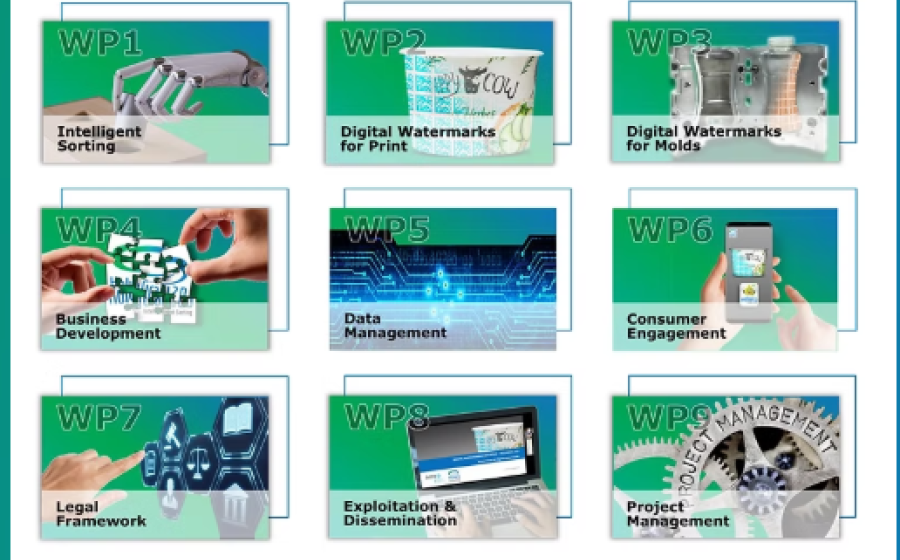
Imagine a world where your packaging tells the recycling system exactly who it is, what it’s made of, and where it should go.
That future is already here — thanks to digital watermarking technology.
What is Digital Watermarking in Packaging?
Digital watermarks are invisible codes embedded into the surface of a packaging material — usually printed all over the pack, like a pattern. These marks are not visible to the human eye, but can be scanned and identified using a high-speed camera or sensor.
Developed as part of the HolyGrail 2.0 initiative in Europe, this technology helps in smart sorting of packaging waste at recycling facilities.
How it Works:
- Watermarks are embedded during printing on packaging (ink or plastic molding).
- Sorting machines scan these marks using near-infrared or digital cameras.
- Real-time identification of material type, multilayer vs mono-material, food-grade vs non-food grade.
- Accurate sorting for recycling streams → more effective, less contamination.
Why it Matters:
- 🚫 Reduces landfill waste
- ♻️ Increases purity of recycling streams
- 🌱 Supports circular economy goals
- 🤖 Enables automation in recycling facilities
This innovation is being tested on PET bottles, shrink sleeves, flexible films, and more. With major FMCG players (Unilever, P&G, Nestlé) already on board, this could revolutionize how packaging is sorted, recycled, and reborn.



